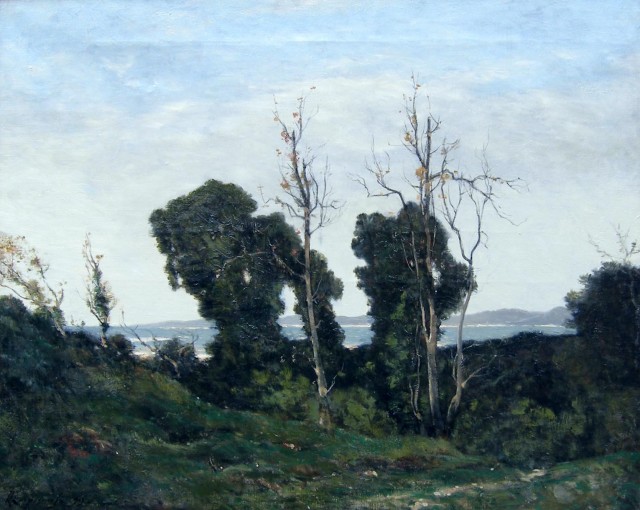Henri-Joseph Harpignies
(1819 - 1916)
Henri-Joseph Harpignies was born at Valenciennes 28 July 1819.Originally a travelling salesman, Harpignies love of painting made him change direction and devote his life to being an artist. Aged 27, Harpignies took the decision to take painting lessons and this he did under the tutelage of the excellent painter of landscapes, Achard.
In 1853, after a voyage to Italy, Harpignies made his debut at the Paris Salon with a painting entitled, Vue de Capri. Harpignies had studiously studied the Barbizon school of painting and was above all influenced by Corot, the Master. His early paintings reflect this influence. However Harpignies was soon to make his own particular style evident in his paintings with a force of expression characterising this. Harpignies continued to exhibit at the Paris Salon frequently but in 1863 his painting, Canards Sauvage, was refused by the admission jury and Harpignies was so incensed that he destroyed the painting and left for Italy immediately. From 1863 to 1865 Harpignies stayed in Italy, sending back a number of paintings.
Harpignies returned to Paris and gained sweet revenge by being awarded medals of excellence for his works at the Salons of 1866, 1868,1869,1878, 1897 and finally the grand prix in 1900.. In 1875, Harpignies was awarded the Cross of a Chevalier of the Legion d'Honneur, in 1883 a Cross d'officier and finally the Cross de Commandeur in 1901.
Harpignies was also a fine watercolourist and in fact exhibited at the New Watercolour Society in London as well as in France. Essentially a painter of landscapes, Harpignies painted throughout France and also in Italy preferring to travel and paint rather than allying himself to a particular region. He painted forests, towns, rivers, estuaries and wooded glades.
Harpignies landscapes are graciously painted with an elegant intimacy, which captures the poetic elements of his expression. He also preferred to paint his landscapes embodying a second element of portrayal for example reflecting the seasons, the time of day, the clarity of light at a particular time of year or even by moonlight.// It could be said that Harpignies was to the Barbizon school what Guillaumin was to the Impressionists and in fact the Anatole France called Harpignies, the Michael Angelo of trees.
Museums:
Besancon
Bucharest
Clamecy
Dieppe
Douai
Grenoble
La-roche-sur-yon
Liege
Lille
Louvre
Orleans
Rochefort
Rouen
Soissons
Tourcoing
Valenciennes
Exhibitions in Great Britain:
Agnews
Goupil & Fils
Lefevre Gallery
New Watercolour Society
Royal Hibernian Academy
Royal Institute of Painters in Watercolour
Royal Scottish Academy
